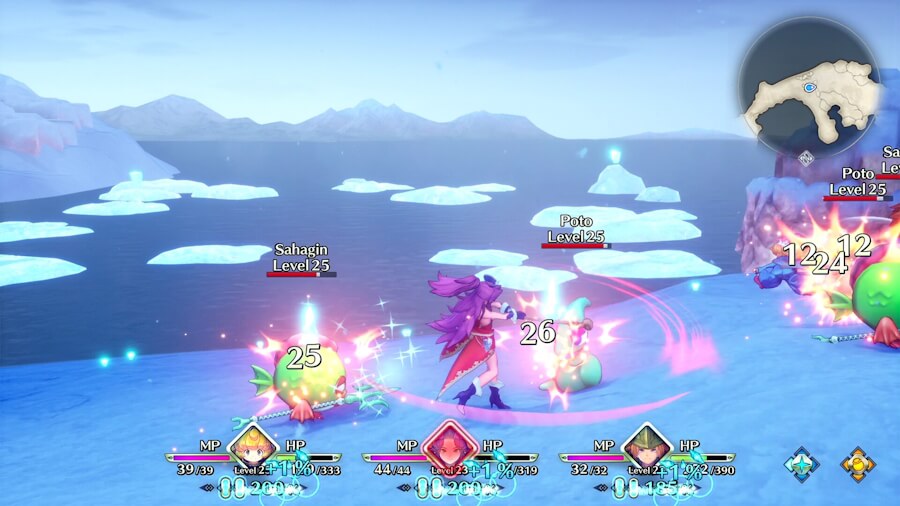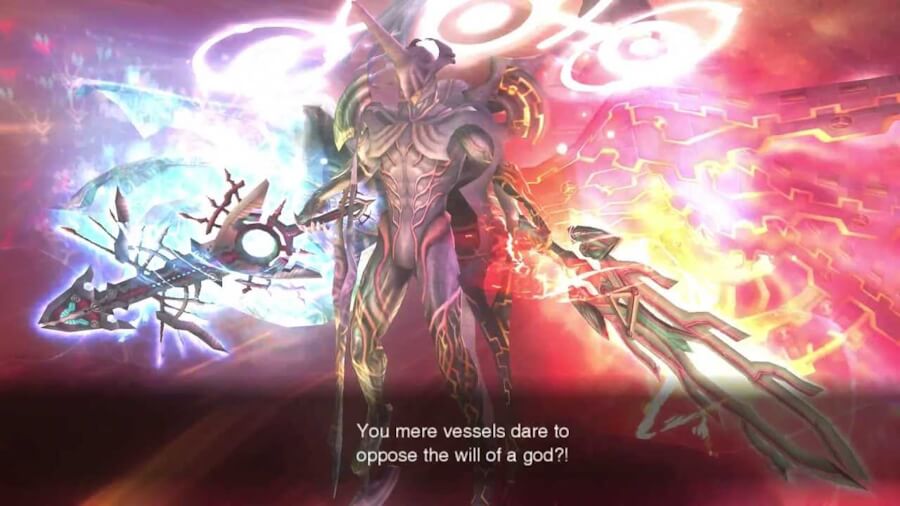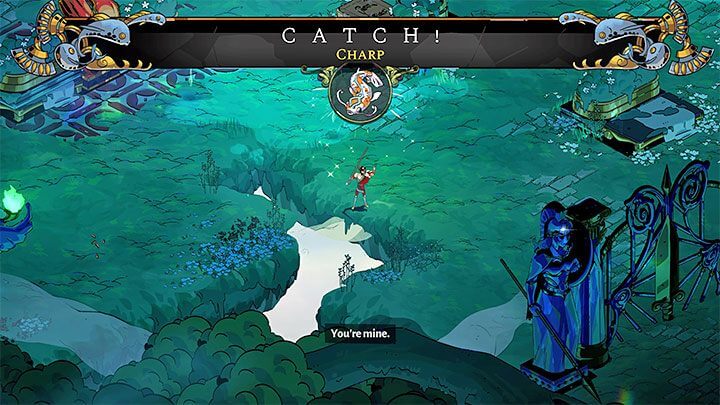What would my perfect JRPG look like? I’ve never really thought about that in full detail. So, here’s my outline for Square Enix to base their next game on, please. (Or maybe these days I should write Sabotage Games after their successful release of Sea of Stars?)
Everyone has some understanding of what an RPG is, despite it being a genre of great variety. Some even seem to know what a JRPG is. But what would the perfect JRPG look like? Have you ever spent some time thinking about it? What would the game have to look like for you to, say, pay double the price of a normal AAA game?
Here’s what I would pay 140 EUR for.
Protagonist
Let’s start with the player character and work our way out into the world and through the story, shall we?
In my dream JRPG, I would like to see a female protagonist. Looking at my own games, you might have guessed it. She shouldn’t look like the new Fable protagonist, of course. Instead, her appearance should capture a blend of grace and grit, without being over the top: neither too revealing in terms of her clothing nor too tomboyish in her demeanour. Not a mage or dancer, but also not a barbarian or knight, so to speak. A thief, I guess, or a ninja.
When it comes to visual customisation, less is more. I’d appreciate a few thoughtful options for hair style and colour, face and maybe general body size and shape, but nothing too extravagant. I don’t want to spend two hours creating the character and then question my choices for the rest of the game anyway, and I also don’t want to go through dozens of options that only two people in the world find somewhat appealing.
A default name would make things easier for me, too, as I usually go with it if there is one. I’m the type of guy who makes a Google search to see if there’s a canon name if no default name is offered. The name should not be silly, of course.
Personality-wise, I would make the protagonist unapologetically badass yet, in a way, very feminine. She should have a dark, even cynical edge to her character, expressed through sarcastic remarks and a world-weary outlook. But she’s not all doom and gloom: She would be a flawed character with a redemption arc, making her journey throughout the game an emotionally gripping experience. There should be moments where she shows genuine warmth and vulnerability, making her multi-dimensional and relatable. In a nutshell, I guess she would be a compelling blend of Velvet from Tales of Berseria, 2B from NieR: Automata, and Throné from Octopath Traveler II. Maybe mix in some of the authenticity and rationality that I saw in Alear from Fire Emblem Engage as well.

Carina Reeves would be my top choice for the voice actress. Even though Fiora from Xenoblade Chronicles wasn’t exactly a cynical character, I’m sure Carina could perfectly portray the protagonist’s complex emotional range from her biting sarcasm to her moments of soft-spoken sincerity. She also has the best British dialect.
Party
Regarding the party members accompanying the protagonist, I would like to see a diverse (but, you know, not too diverse) cast of characters spanning different fantasy archetypes. I think there should be a tank, a healer, a physical damage dealer, a magical damage dealer and offensive as well as defensive supports, but they should all have the option to be useful in other roles to some extent. (The protagonist herself should be a generalist, I guess, who can also take on any of the other roles when necessary.) That would make a party of 7.

In terms of skills, I’d hope to see a lot of synergy between characters. There should always be combos to plan out that are stronger than just selecting the skill that seems immediately useful in a given situation. It should play like a good card game, basically. I want some Hearthstone in my JRPG!
When it comes to personalities, some lighthearted banter would make the journey more enjoyable. But I also want to see complex backstories and emotional depth behind each character. What I don’t want to see is unnecessary drama. It’s always cool when a villain turns into a friend — Dragonball excels at this with Piccolo and Vegeta —, but within the party, there should actually be a completely friendly, supportive atmosphere. I quite liked the way Persona 5 handled it (for the most part).
World
For the world our party journeys through, I envision a lush fantasy realm with varied environments brimming with wonder. The normal JRPG stuff, basically. There should be vivid forests teeming with fauna. Swamps with glowy mushrooms and giant mosquitos. Tranquil groves. Ancient temples. Caves. Mines. Majestic mountains covered in snow. Gloomy crypts. Hot, dry deserts with sun-bleached ruins buried in sand. Floating islands, celestial citadels. Villages, towns, cities, castles. And make some of the landmarks really large, like in Xenoblade Chronicles.

That said, I would also like to see some Metroidvania or Zelda aspects to the game world: You should not traverse it in a linear fashion where you complete an area and never return. It should, instead, be interconnected at least at some points, with some paths being blocked off at first and unlocked later — be it via story events, character abilities or items.
Exploration must be rewarding not only for some breathtaking landscape. There should be hidden chests, optional dungeons and other secrets. Ideally, some of them are hinted at by NPCs or sources of lore – a paperchase of sorts. That’s what makes a game world interesting while also increasing its immersive qualities.
Battles
As far as the battle system is concerned, I’d prefer either an action battle system or a CTB.
If it’s an action battle system, it should play like Terranigma or, well, kind of like Super Smash Bros.: fast moves, snappy controls. Mix that with some Trials of Mana in terms of team interactions and I’d be very happy.

I think a CTB would be even better, though. I don’t think turn-based combat is inferior at all, like, apparently, many other people do. For example, I loved the battle system in Final Fantasy X, especially the feature that allowed you to swap in other party members without losing the turn. You can probably do a few things to improve the strategic aspects of a CTB like that. Final Fantasy X had very little of what I would call synergy between characters and abilities, and the turn-order-altering moves were rather limited as well. There’s definitely design space left to explore.
Whether it’s an action battle system or a CTB, I would like to have a high frequency of easy common encounters — cannon-fodder enemies. I want to blaze through dungeons and grind at a fast pace. It’s always fun if there’s a bunch of enemies at once when you have some flashy area-of-effect spell available. I also love applying damage-over-time effects to many enemies at once.
The bosses, on the other hand, should be challenging and actually require some careful consideration which characters, skills and equipment to use. However, I also like it when there’s a puzzle element to the battle that, once figured out, makes it much easier. Basically, levelling-up, strategising and being brilliant should all be valid ways of overcoming a difficult boss.
Accumulation
Another key aspect of JRPGs is accumulation of various sorts: allies, power, options, resources.
Level-ups should be relatively frequent (max level 99, I’d say), and there should be some stat points to spend in order to customise characters a bit.
Skills you could maybe gain in different ways: by levelling up, by advancing the story, by spending some kind of resource (with a choice what skill to learn), by changing your class, by equipping certain weapons, armours or accessories. I think you might actually be able to include all of these:
- Level-up: signature skills
- Story: finishers
- Resources: skill upgrades or passives
- Class: common skills
- Items: enemy skills
In terms of skill upgrades, I quite enjoy being able to decide what exactly to upgrade: increase the damage, increase the effect, lower the MP cost, lower the cooldown?
I also loved the ability system in Final Fantasy IX, but I think that would be a little too much in addition to everything else I mentioned here.

Now, for the equipment. There should be a lot of customisation options via weapons, armours and accessories, and they should stack, so to speak: If I want to build a tank, I want to build a tank. I want to find ways throughout the game to extend the abilities of my tank further and further. The same goes for other roles, of course. New pieces of equipment should be like a piece of a puzzle.
Finally, let’s talk about consumables and collectibles. There should be various potions, various loot, various quest items, various crafting materials, but please, don’t add more than necessary! Keep it as simple as possible. I’m not a big fan of games like Xenoblade Chronicles which shower you with seemingly random stuff like fifty types of vegetables, or games like Octopath Traveller which give you fifty different consumables for restoring small amounts of HP. I prefer the Secret of Mana and The Legend of Zelda: Skyward Sword approaches to consumables and crafting materials, respectively: When asked, a normal person should be able to name them all — or at least be able to tell if a given item is actually in the game or made up by the quiz master.
Story
Story-wise, I don’t think it’s too much to ask for an interesting setting. That’s the strong point of the genre, after all. I love sci-fi settings, but fantasy settings are also completely fine. The ideal, however, would probably be a mystified version of Earth, as it is seen in Illusion of Gaia and Terranigma, and, to some extent, Earthbound and Mother 3.

There should be very emotional moments, of course. But these only really hit hard when combined with grand themes and philosophical questions around life and death. Once again, Illusion of Gaia or Terranigma may serve as a blueprint, but there are many other JRPGs that excel at those scenes that touch the soul. Tales of Symphonia, for instance. Baten Kaitos. Persona 5.
I quite like it when JRPGs start with a simple premise, giving you a wooden sword and sending you to the woods to kill some slimes at 2 damage per hit. At the end, however, I absolutely need a finale where we venture through Heaven or Hell, fight colour-swapped versions of previous bosses as common enemies and find legendary weapons — all accompanied by kick-ass music — in order to slay some divine being which threatens to end the universe.
Choices
Well, give me some choices, please. I’m not talking about visual-novel-level choices with vastly different consequences and a hundred alternative endings. But I’d like to choose a class, a guild or a pet at the beginning of the game and have some dialog trees based on the protagonist’s reply at key moments. Don’t categorise the replies as good vs. bad, though, but as behaved vs. snarky vs. silly. They should not imply vice or virtue, but traits or mood.

Needless to say that choices should still matter, even if they only determine what item the protagonist gets from the NPC.
Graphics
I like graphics that are stylised and polished. From the environment to the UI, things can be rather simplistic, but there must not be any rough edges, figuratively speaking. Nothing has to be absolute state of the art, but the game shouldn’t look like a lazy N64 port either. 16-bit pixel graphics are completely fine. In fact, I think I actually prefer them over some of the more advanced styles (like HD-2D), although Trials of Mana and Dragon Quest X were stunningly beautiful in their vibrant 3D-anime approaches, and the new Zelda games or Genshin Impact even more so.

The character art style should definitely be Japanese to some extent. I don’t want people and monsters to look too realistic. Instead, expressiveness is what’s most important.
Soundtrack
A beautiful and memorable soundtrack is a must-have for any JRPG. It should contain melancholic harmonies and catchy melodies, but also epic character and boss themes. The pieces should be of a quality that makes me want to listen to them while working or download some piano or acoustic-guitar covers to use as alarm tones.
What else is there to say? You all know at least one videogame soundtrack you’re fond of. But my perfect JRPG has an even better one, of course!
Final Boss
Final point to discuss: the final boss.
Since I actually want some grinding to be part of normal gameplay, common encounters should be fast and easy, as I already said. Bosses, however, are a different thing. And the final boss should be entirely different again.
In my ideal game, I think there are two actual combat phases. No more, please! There may be a gimmicky third phase that can’t be lost (or, you know, only on purpose), but don’t present me with more than two actual challenges, or else I won’t enjoy the cutscenes inbetween and afterwards for fear of losing my hard-earned progress. I’m a little paranoid like that.

Optional bosses should serve as an incentive to 100% the game. They should only be beatable if you are at max level and have all the tools available. Defeating the final optional boss should mean that you are completely done with the game. There is nothing else to do. You win, for real.
Other Elements
In addition to everything mentioned, I would like to see some interesting side quests as optional content. They should be handed out by NPCs which actually have a name and a backstory, and completing quests should be rewarded by items that are useful and that can’t be found or bought anywhere else.
Friendships and romances are not that important, but if done well, they can add another layer of depth to the characters. I think Persona 5 handled this exceptionally well, giving you a reason to actually advance through the confidant ranks for passive abilities, some of which were really powerful.

It should also be worth looking up some trivia on YouTube about the game in order to find out about secrets you missed during your playthrough. I want to watch an HCBailly letsplay and constantly go: ‘Oh! I didn’t know you could do that!’
Breakable objects, like urns, are a nice bonus too.
And none of this!
Let’s talk about elements my perfect JRPG does not need at all.
First of all, I don’t need any mini games. There, I said it. Neither do I need game-spanning card shenenigans nor rudimentary-boxing tournaments, racing courses, remembering orders from guests in a café or chasing chickens through town. I actually think mini-games take away from the immersion and epicness of a great JRPG. And why even include stuff like that? As if your standard JRPG wasn’t full of content already! What’s okay are small dexterity- or reaction-time-based puzzles or mechanics (maybe we can even call them ’micro-games’) like the fishing in Hades, which takes, like, 3 seconds to complete and rewards you with something useful.

Second, please don’t add interaction abilities like in Octopath Traveler. It’s more than enough to talk to every NPC in the game (and rarely get any interesting information); don’t make me interact with the same generic guy multiple times so I can steal his candies, get even more irrelevant information and engage in a meaningless battle.
Finally, please don’t add any filler segments to ‘flesh out’ the story. Illusion of Gaia managed to tell an epic story and make you care about the characters in about 13 hours, and so can any JRPG. Keep it as short as possible. There are many other games I want to spend my limited time on, some of which may even be sold by the same company! If you want me to play all your games, don’t make them 100 hours long.
Conclusion
It doesn’t appear too hard to craft my perfect JRPG, actually. I don’t think there are very many things in this blog article that are unreasonable. In fact, I reckon most of them are shared by a majority of players, while also being easy to realise, evidently, since most of the time, I have no difficulty coming up with a game that serves as a brilliant example.
So, where is it, my perfect JRPG? Will I ever be able to play it? Will AI help bring the vision to life myself? Time will tell.
***
What do you think: Is the perfect JRPG I outlined close to your own? What are elements you love, elements you hate? What franchise would be the most likely to actually deliver on your dreams?
